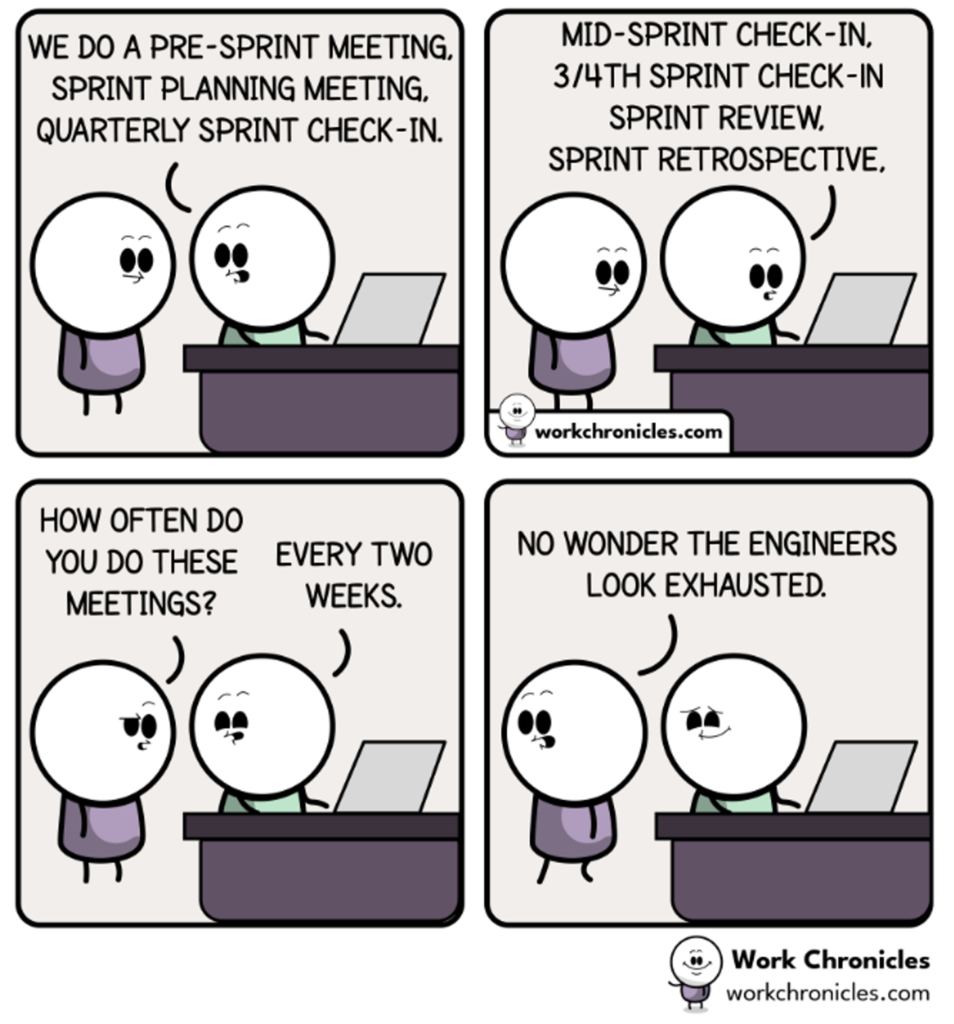The hidden cost of Agile
Agile rituals are filled with waste, so much so that sometimes we can barely see it! Removing artificial barriers and reducing the time spent on non-development tasks is paramount to improving productivity and reducing time to delivery.

The Cost of Planning
Stopping the production of software for sprint planning and release planning is completely against the principles of flow and wastes hundreds of labor days every release. Imagine 5 teams of 8 people plus leadership.
Release planning: 2 days per release * 5 teams * 8 team members = 80 labor days
Sprint Planning: .5 days per sprint * 6 sprints per release * 5 teams * 8 team members = 120 labor days
That is 200 labor days of work that could be better spent on development – and that does not even include the time of program managers and other cross team resources. Eliminating the arbitrary two- or three-week boundaries increases productivity immediately.
The value of a plan
Plans rarely survive first contact with the real world, and even more time is spent re-planning. That is not to say that you don’t need to know what is going on. Measuring the throughput of your team and ensuring that everyone is working on the right thing is much more valuable.
Prioritize rather than plan
Instead of planning we advocate prioritizing. A small group of people, led by the designer, decides what needs to be done next. Knowing what needs to be done next is the hardest and most important thing in development. Prioritization, in numerical order, is a great tool for this. Too often we encounter multiple “top” priorities. While systems are complex, and things can be done in parallel, assigning a ranked priority of assignments keeps everyone moving and working on important capabilities. A great deal of time is wasted by working on things that are not needed. This is a failure in leadership – a common understanding of what do to next reduces this waste significantly.
Yes, we need to understand scope
When bidding or starting a project, we need to have a sense of what it is going to take to complete a valuable solution and deliver it into the hands of those that need it. Traditional planning has failed at every turn – most software projects are 100% over budget while only delivering 50% of the promised capabilities. Get your smartest people together to scope out the work. Ensure you have a Strong Center to guide in-scope out-of-scope decisions. Be ruthless about honoring the Strong Center. Allow the customer to change direction along the way – true Agile allows requirements can change.
At SphereOI we focus on stable and continuous flow. In our software and AI factories we produce results on a predictable cadence, allowing us to forecast deliveries without spending a lot of time planning. Keeping the team focused on the most important priority reduces waste and accelerates delivery. Weekly demonstrations of working code give the customer insight into progress and the ability to redirect as needed.

Scott Pringle is an experienced hands-on technology executive trained in applied mathematics and software systems engineering. He is passionate about using first principles to drive innovation and accelerate time to value.
